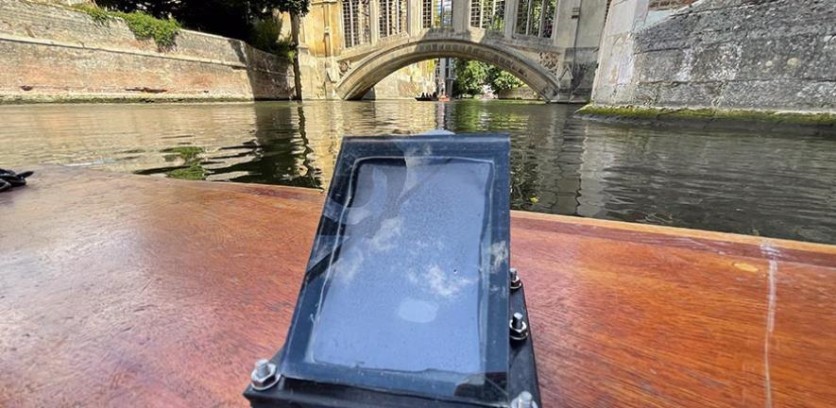Researchers at the University of Cambridge have introduced a floating, solar-powered device capable of transforming contaminated water or seawater into clean hydrogen fuel and purified water.
This innovative technology, inspired by the process of photosynthesis in plants, has the potential to be a game-changer, especially in resource-limited or off-grid environments.

Inspired by Photosynthesis
The device operates on the principle of photosynthesis, where plants convert sunlight into food. Unlike earlier versions of artificial leaves, which could only produce green hydrogen fuel from clean water sources, this new device works with polluted or seawater sources, simultaneously producing clean drinking water.
The significance of this lies in its versatility and potential applications in regions where clean water is scarce and infrastructure for water purification is limited.
Dr. Chanon Pornrungroj, a researcher from Cambridge's Yusuf Hamied Department of Chemistry, explained the challenge of bringing together solar fuel production and water purification in a single device.
"Solar-driven water splitting, where water molecules are broken down into hydrogen and oxygen, need to start with totally pure water because any contaminants can poison the catalyst or cause unwanted chemical side-reactions," Pornrungroj said in a statement.
The researchers developed a solution to tackle this issue. They implemented a design involving the application of a photocatalyst onto a nanostructured carbon mesh recognized for its exceptional light and heat absorption capabilities.
This mesh plays a crucial role in producing water vapor utilized by the photocatalyst for hydrogen creation. The porous carbon mesh, treated to resist water, serves a dual function: facilitating the floating of the photocatalyst and acting as a barrier against interference from waterborne contaminants below.
The device goes beyond the conventional solar spectrum utilization by incorporating a white, UV-absorbing layer for hydrogen production via water splitting.
This design ensures that more of the sun's energy is utilized, with the remaining light transmitted to the bottom of the device, where it vaporizes water. The researchers compare this approach to the process of transpiration in real leaves.
Potential Applications
The applications of such a device are vast, especially in addressing the energy and water crises faced by various parts of the world. For instance, using green hydrogen for cooking instead of "dirty" fuels like kerosene could significantly reduce indoor air pollution, responsible for over three million deaths annually, according to the World Health Organization.
Additionally, with 1.8 billion people still lacking access to safe drinking water at home, the device's capability to produce clean drinking water offers a crucial solution.
While the floating solar-powered device is currently a proof of principle, its potential impact is considerable. The researchers envision it as a step towards developing a truly circular economy and a sustainable future.
"The climate crisis and issues around pollution and health are closely related, and developing an approach that could help address both would be a game-changer for so many people," Reisner said in a statement.
The findings of the team were published in the journal Nature Water.
Related Article : SolarEV City: Researchers Suggests Combining Solar Power With EVs in Lighting Up Cities Like Paris





